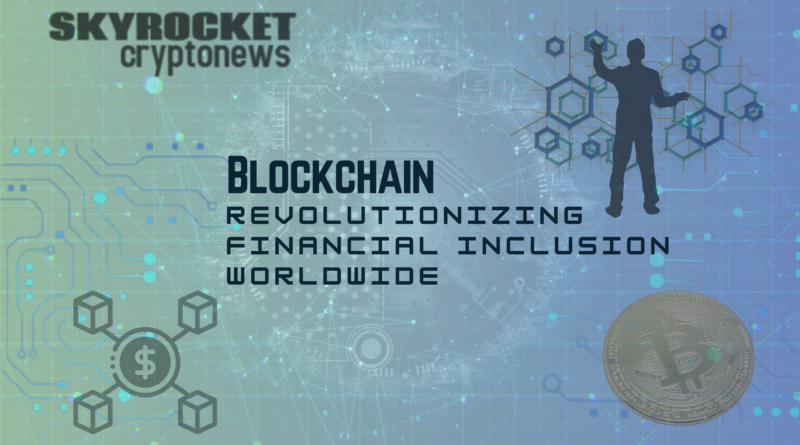Bridging the Gap: How Blockchain is Revolutionizing Financial Inclusion Worldwide
Financial inclusion is the ability to access essential financial services – which remains a significant challenge for billions of people globally. The traditional financial system, often reliant on centralized institutions and complex regulations, excludes a vast portion of the world’s population, particularly in developing economies. Here’s where blockchain technology emerges as a potential game-changer, poised to revolutionize financial inclusion and empower individuals worldwide.
Understanding the Challenges of Financial Exclusion
The reasons for financial exclusion are multifaceted. Lack of proper documentation, geographical remoteness, and income instability are common hurdles for individuals seeking to enter the formal financial system. Traditional institutions often require high minimum balances, hefty fees, and complex procedures that can be daunting for those unfamiliar with the system. This exclusion perpetuates cycles of poverty, hinders economic growth, and limits opportunities for individuals to build a secure future.
How Blockchain Technology Empowers Financial Inclusion
Blockchain, the distributed ledger technology underpinning cryptocurrencies, offers a unique set of features that can address the core challenges of financial inclusion. Here’s how:
- Decentralization: By eliminating the need for central authorities, blockchain empowers individuals to manage their finances. They can participate in financial services without relying on traditional banks or institutions. This fosters greater financial autonomy and reduces barriers to entry.
- Transparency and Security: Blockchain transactions are immutable and transparent, recorded on a public ledger accessible to all participants. This builds trust within the system, minimizes the risk of fraud, and empowers individuals to track their financial activities securely.
- Accessibility: Blockchain-based financial services can be accessed through smartphones or basic devices with internet connectivity. This eliminates the need for physical bank branches, making financial services accessible even in remote areas with limited infrastructure.
- Reduced Costs: By eliminating intermediaries and streamlining processes, blockchain enables lower transaction fees compared to traditional financial systems. This makes financial services more affordable for individuals with limited resources.
Innovative Solutions: How Blockchain is Driving Financial Inclusion
Several groundbreaking initiatives are leveraging blockchain technology to promote financial inclusion across the globe:
- Micropayments and Remittances: Blockchain-based platforms enable fast, secure, and cost-effective cross-border payments. This empowers migrant workers to send money back home without exorbitant fees, a lifeline for families in developing countries.
- Digital Identity Management: Blockchain can be used to create secure and verifiable digital identities, a crucial requirement for accessing financial services. This empowers individuals without traditional identification documents to participate in the formal financial system.
- Microfinance and Lending: Blockchain-based platforms can facilitate peer-to-peer lending and microfinance initiatives. This empowers individuals to access loans and other financial products without relying on traditional financial institutions that often have stringent eligibility requirements.
- Financial Inclusion for Refugees: Blockchain-based solutions allow refugees to securely store and manage their financial assets, even when displaced. This provides them with a sense of financial security and facilitates their integration into new communities.
The Road Ahead: Challenges and Opportunities for Blockchain-based Financial Inclusion
While the potential of blockchain for financial inclusion is undeniable, challenges remain:
- Scalability and Adoption: Current blockchain platforms face scalability issues that need to be addressed to accommodate a larger user base. Additionally, widespread adoption by governments and financial institutions is crucial for mainstream integration.
- Regulatory Uncertainty: The regulatory landscape surrounding blockchain and cryptocurrencies remains in flux. Clear regulations are needed to ensure stakeholders’ secure and trustworthy environment.
- Digital Literacy and Infrastructure: Lack of access to smartphones and internet connectivity in many developing countries can limit the reach of blockchain-based solutions. Bridging the digital divide is essential for inclusive adoption.
However, continuous development and collaboration are paving the way for a more inclusive future. Governments, financial institutions, and technology companies are increasingly exploring the potential of blockchain for financial inclusion. Initiatives are underway to address scalability concerns, create regulatory frameworks, and increase digital literacy in underserved communities.
Conclusion: Building a More Inclusive Financial Future with Blockchain
By addressing financial exclusion, blockchain technology has the potential to unlock a wave of economic opportunities for billions worldwide. By empowering individuals to manage their finances securely and efficiently, blockchain can contribute to poverty reduction, economic growth, and a more equitable financial landscape. As the technology evolves and stakeholders collaborate, blockchain can pave the way for a future where financial inclusion is not a privilege, but a fundamental right for all.

